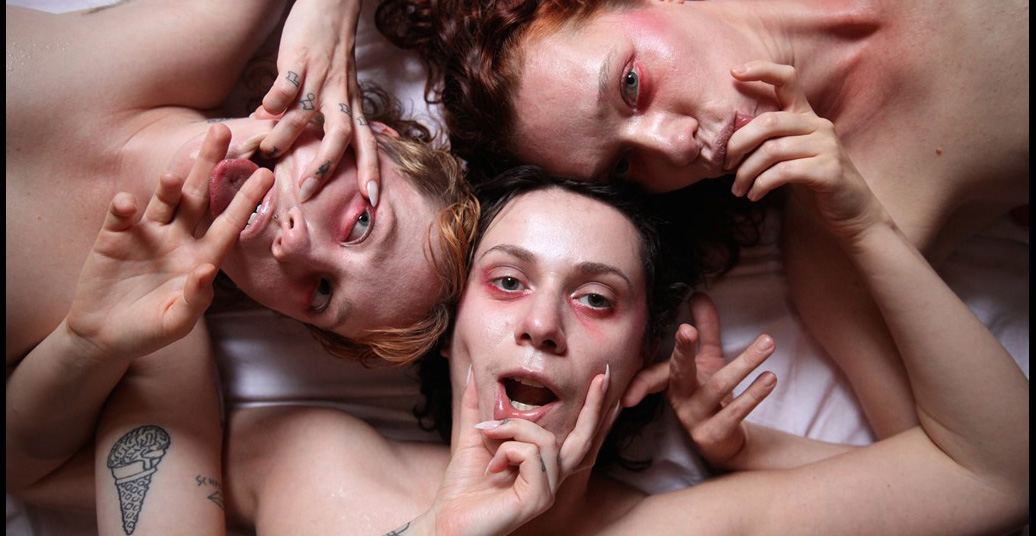In her new piece “Inflammations” at the Sophiensæle, Polish choreographer Ania Nowak, who lives in Berlin, presents an absurd classification of bodily phenomena in which she relies more on the effect of the spoken word than on the body’s own experiences.
Health is not a constant state but rather a dynamic process. At least according to holistic approaches, which do not view it as a lofty ideal in the absence of illnesses and exclude the role of social status and psychological condition in its development. So who is clinically completely healthy? Who doesn’t experience physical or mental dysfunctions? A prick in the skin or in the heart? Appropriately, “What brought you here today”?, is the first question Ania Nowak poses to the audience in the Hochzeitssaal of the Sophiensæle at the premiere. “Headaches, backaches, heartaches?”, she asks over and over. What starts off as a doctor parody turns into a comprehensive catalogue of bodily phenomena, organs, and different types of pain. Chronic, acute, piercing, dull… – she herself is wearing a transparent patient’s gown, as are her two co-performers (Angela Alves, Laura Lulika).
In contrast to the dominance of the sterile white in the space and her frozen facial expression, Nowak starts the performance lying on a tentacle-shaped, cuddly floor cushion. It is a comfort that everything isn’t clinically cool. Ultimately, we humans want to enjoy pleasant sensory experiences. Even in states of pain, or especially then. Another performer is already at play. She is touching a silicon mat on the floor. The mat is a haptic delight and has a small bump that arouses the creative potential of the “flawed”. At the same time, it appears like a sexual organ inviting childish sexual games. The third performer appears bored while swinging in a hanging lounger. Is the lounger intended for erotic games or for hospital stays? The performers indeed go on to play doctor while laughing.
However, the eroticism, the seeking and discovering, come to a halt as soon as the verbal comes into play and the stringing together of words on the performers’ slips of paper develops into a long spoken-word session. And this unfolds even though they are in close physical contact with one another and their words, uttered in varying constellations, concern the lust, horror, and science of the body. The rhythmic repetitions (dare-demand-diagnosis/diagnosis-demands-dare/share-self-care) create empty phrases out of words. The rhymes (horrify/mystify/glorify/magnify), with no unifying narrative, recall children’s games, tongue twisters. Again and again, absurd new definitions are invented for known terms. PMS, for example, stands for “Practical Magic Skills”. The fascinating thing behind these manifestly presented empty phrases -namely who owns these terms, who diagnoses our conditions- rarely surfaces. The listing continues until a few people leave the room, until a performer asks the audience if it’s had enough.
“Inflammations” claims to be a piece about vulnerability, chronic pain, and exhaustion. Things we shouldn’t have enough of. Especially when showing vulnerability or illness is largely seen as taboo if the necessary beauty, strength, and a certain status aren’t present to make the undesired palatable to the viewers. However, that which can’t be shown is supported with all means possible, since pathologization is money. The fact that the book International Statistical Classification of Diseases and Related Health Problems by the World Health Organization gets more extensive with each issue is not due to more people getting ill, but rather to more people being defined as ill. The word catalogue from “Inflammations“ implies this but maintains a sarcastic distance. The slogan-esqueness and lifelessness may hit the nail on the head through an excess of definitions when it comes to the zeitgeist of fatigue (either way, the audience laughs most when abbreviations like ADHD and PTSD are followed by “FOMO”, “fear of missing out”). However, it doesn’t manage the time or space for these words to resonate in the body, and as such to be experienced and questioned. Also because we hardly know what is happening with the performers’ bodies.
That changes in the last half hour. Not because they’re naked, but because they carefully, lovingly, and gently undress each other and devote themselves to the body of another person. You sense a coalescence of eroticism, friendship, and love while the bodies of the performers find solidarity in their vulnerability. A resistance to pathologization, which comes too late. It would be nice to hear what these bodies themselves still have to say and not merely what is said about them.
Englische Übersetzung von Melissa Maldenado




